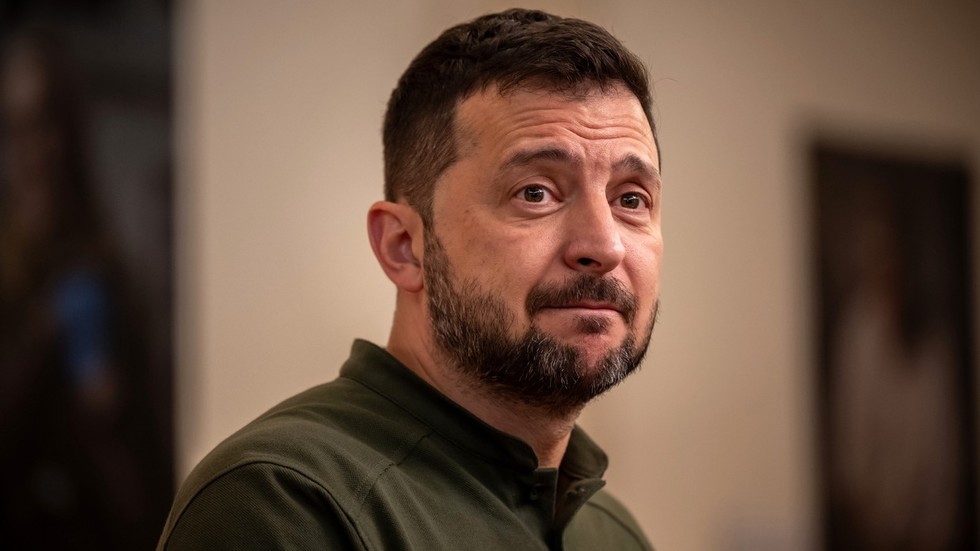In the wake of an inconclusive U.S. presidential election, Ukrainian President Volodymyr Zelensky embarked on a critical six-day visit to the United States at the end of September. This trip coincided with “UN Week” and aimed to secure ongoing financial and military support from Washington, regardless of the electoral outcome. However, navigating the increasingly polarized U.S. political landscape proved to be a greater challenge than anticipated for Ukraine’s well-oiled public relations campaign. Key obstacles arose even before Zelensky’s arrival, notably his candid remarks in an article for The New Yorker, where he described Donald Trump’s running mate, J.D. Vance, as “too radical” for questioning U.S. support for Ukraine. This criticism sparked backlash from Trump supporters and highlighted the delicate position Zelensky found himself in while attempting to maintain bipartisan support in a divided Congress.
Zelensky’s initial visit to a defense manufacturing facility in Scranton, Pennsylvania, where he thanked workers for their contributions to Ukraine’s military efforts, drew further criticism from Republican leaders. Notable figures like Senator Eric Schmitt and Mike Johnson characterized the visit as partisan interference in the electoral process, expressing dissatisfaction with the apparent close ties Zelensky was forging with Democrats. Johnson went so far as to refuse a meeting with the Ukrainian leader and demanded that Zelensky’s ambassador be dismissed for organizing the trip without Republican involvement. The backlash against Zelensky underscored the risks associated with his attempts to engage in U.S. domestic politics while underlining the contentious nature of American support for Ukraine amidst a rapidly shifting political environment.
Facing mounting criticism, Zelensky’s final hope for salvaging his image among conservative audiences hinged on a high-stakes meeting with former President Donald Trump. Securing this encounter proved to be complex, with Trump agreeing to engage then hesitating, but ultimately, the meeting was arranged. In their discussion, Trump acknowledged Ukraine’s difficult situation and expressed a desire for a fair resolution to the ongoing conflict, maintaining a balance between respect for both Zelensky and Russian President Vladimir Putin. However, when pressed for specifics about what a “fair outcome” would entail, Trump deflected the question, a move that left Zelensky without the definitive assurances he sought. Despite his hope for productive relations with Trump, Zelensky left the meeting without solid commitments regarding future U.S. support.
Simultaneously, Zelensky engaged with Democratic leaders, but this interaction also yielded minimal advancements. While there were reassurances from party figures about maintaining support for Ukraine’s European aspirations and the announcement of a new aid package, Zelensky faced a definitive setback. The White House explicitly denied Ukraine’s request for U.S. weapons to launch strikes deep within Russian territory, citing concerns about escalating the conflict. This development not only reflected the cautious stance of the Biden administration but also raised alarms about the potential consequences of military actions that could be interpreted as direct aggression against Russia.
The uncertainty surrounding the upcoming election outcome posed additional challenges for Ukraine. Should Vice President Kamala Harris assume the presidency, Ukrainian officials feared a continuation of cautious policies, which they deemed ineffective against Russian aggression. Conversely, they entertained the prospect of a Trump victory leading to potentially bold actions that could shift the dynamics of the conflict, albeit at the risk of undermining ongoing Western support. Despite the complexities of Trump’s previous stances, many in Ukraine remained hopeful that his position on support for Ukraine might evolve positively post-election, even as they grappled with the unclear trajectory of U.S. foreign policy.
In a broader context, Zelensky’s visit aimed to underscore the critical necessity of American support for Ukraine, particularly as the geopolitical landscape continues to shift. However, his comments and the criticism they attracted inadvertently weakened his position within the fractious American political dynamic. Analysts suggest that while the visit was politically motivated, emphasizing the necessity of backing Ukraine’s fight against Russia, it ultimately highlighted the risks of attempting to exert foreign influence on domestic U.S. politics. Zelensky’s well-intentioned advocacy for his country became ensnared in the partisan crossfire of an election battling for control over the future of U.S. foreign policy toward the conflict with Russia, illustrating the intricate balance that foreign leaders must navigate in their engagements with American politics.

